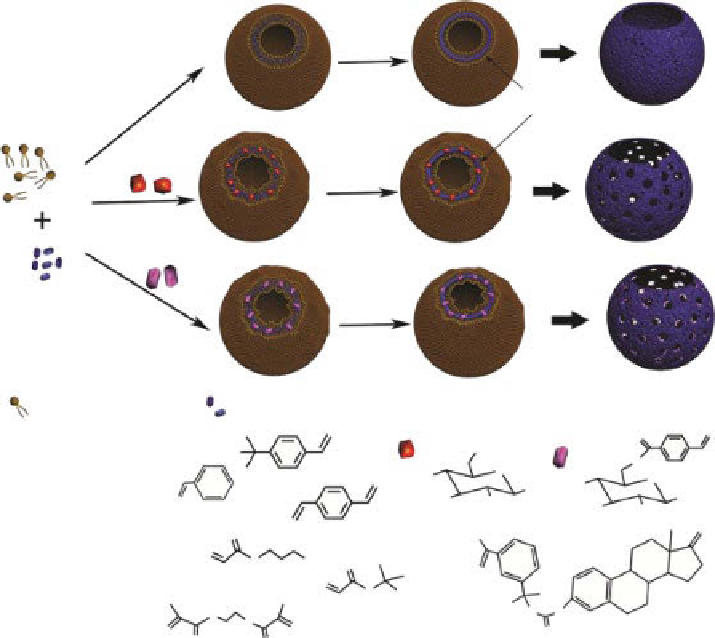Biomedical Engineering Reference
In-Depth Information
(a)
(b)
(c)
P
o
l
y
m
e
r
i
z
a
t
i
o
n
Polymer
• Bilayer-forming
molecules
• Lipids
• Surfactants
• Monomers
Pore-forming templates
O
=
OAc
=
O
O
AcO
O
t-BSt
AcO
OAc
OAc
AcO
OAc
AcO
OAc
St
GPA
GTA-Vinyl
O
O
DVB
H
2
C
O
CH
3
O
BMA
H
2
C
O
t-BMA
O
HN
O
O
CH
2
H
2
C
O
Est-Vinyl
O
O
EGDMA
Figure 4.3
Bilayer-templated assembly of NCs. (a) Formation of bilayers with loaded
monomers with or without pore-forming templates; (b) polymerization (thermally or uV
induced) leading to the cross-linked polymer shell in the bilayer interior; (c) scaffold removal
and formation of hollow NCs with nanometer-thin walls. (Reprinted and adapted with permis-
sion from Ref. [17]. © American Chemical Society.)
showed that the capsules prepared with a high concentration of cross-linkers (1:1
monomer-to-cross-linker ratio) [13] retain the shape and size of vesicles used for the
capsule synthesis (Fig. 4.4). A combination of transmission electron microscopy
(TEm) and dynamic light scattering (DLS) showed the same average size and size
distribution throughout the NC synthesis (Fig. 4.4).
An alternative route to the synthesis of polyelectrolyte hollow spheres is
spontaneous assembly of oppositely charged surfactants [19, 20]. Direct templating
without morphological changes and by use of hydrophobic monomers was achieved
with the help of equilibrium vesicles [21-24]. The hollow polymer capsules are
stable enough to withstand dialysis, vacuum drying, and resuspension in water aided
by nonionic surfactants. The stability of these polymerizable vesicles results from
the high cross-link density of polystyrene, from the compatibility of the aromatic

Search WWH ::

Custom Search